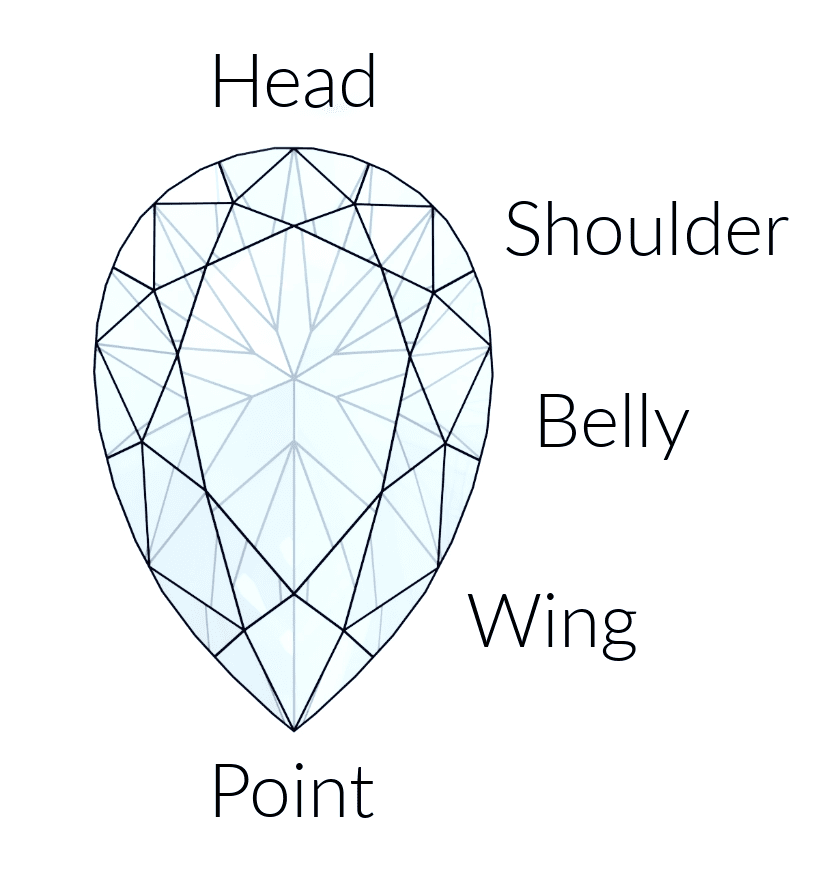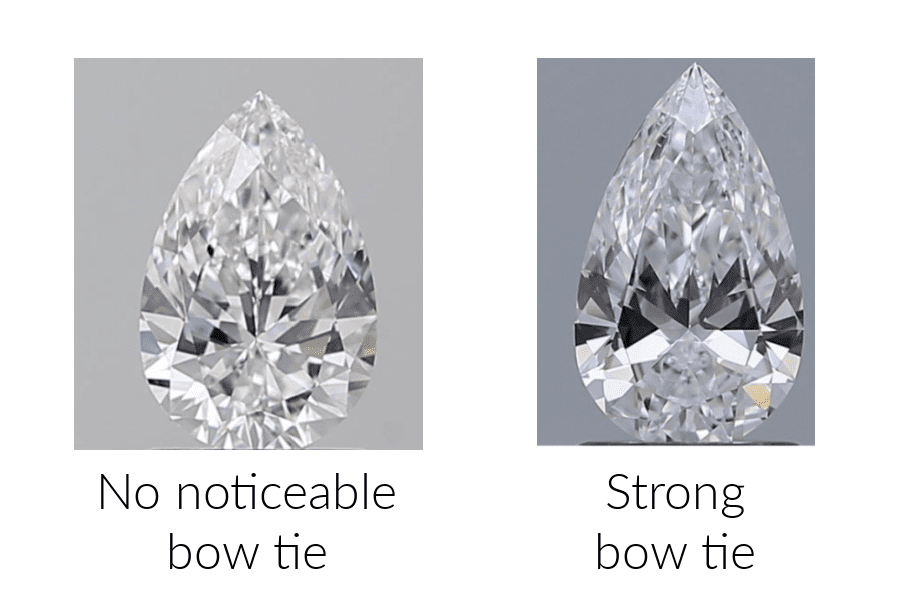Why Pear Shaped Diamond Rings Are Special | Rare Carat
A mix between round and marquise outlines, a pear shaped diamond is a graceful option for those seeking a timeless and elegant ring. Some of the most famous diamonds in history are pear-shaped, such as the nearly 70 carat Taylor-Burton diamond purchased for actress Elizabeth Taylor for over a million dollars in 1969! Pears are a great choice for rings because their gently asymmetrical pointed outline makes them appear both larger than their round counterparts and they will flatter any hand shape.

Who Invented the Pear Shape Diamond?
Pear-shaped diamonds, or any complex and symmetrically cut diamond for that matter, would not be possible without Lodewyk van Bercken, a fifteenth century Flemish inventor who created a device called a “skeif”. Skeifs are polishing wheels which use a combination of olive oil and diamond dust to precisely, and efficiently, facet diamonds. This innovation revolutionized the diamond industry by greatly enhancing the beauty of stones and leading to the creation of the popular pear shape.
How Should I Set a Pear Shaped Diamond?
Pear stones (sometimes people call them a teardrop) are available in both brilliant cut facet patterns and step cut facet patterns. As a general rule, go for higher clarity on step cuts. Although traditionally worn with the point oriented away from the wearer, there is no steadfast rule and you can wear the stone in any direction that makes you happy! Some designs even set the stone lengthwise across the finger, termed a “transverse” or “east-west” setting.
When selecting a pear shaped stone, symmetry and proportions are everything! To understand the descriptions of stones, here are some anatomical terms that you need to be familiar with.

Which Pear Shape Outline is Best?
Balanced stones will have a classic, rounded head with a point at the opposite end, and the GIA lists certain length to width ratios that are considered most desirable (1.45 - 1.55). You can find pear shapes with any number of facets and with every proportion imaginable. What matters the most is that the stone is symmetrical (you want the left and right sides to be completely even). Also, keep an eye out for a bow tie effect; this is a dark region in the center of the stone that reaches across the belly. Pretty much every pear will have a bow-tie to some degree, you just want to avoid the ones that are dark and pronounced enough to be distracting.

What Pear Shape Looks Good on My Finger?
Ratio is another factor to consider when choosing a pear shaped diamond, how long or short the stone looks. The higher the ratio, the longer the shape. Perhaps you have a long, thin finger, so you may want a stretched stone with a thinner belly to mimic your anatomy. Stones that are greatly stretched lengthwise may be called “pendeloque.” Those with shorter and wider fingers may prefer a stone that has wider shoulders, thinking this is creating a lengthening effect.
What Setting Should I Choose for a Pear Shape?
Pear shaped diamonds can be worn as solitaires in their own right, but there are many designs which incorporate multiple stones. You can decorate your pear with a delicate halo, enhance your ring with side stones, or even find a fun cocktail cluster pattern. However, practically speaking, be sure that whatever design you choose protects the point of the stone. This area is most susceptible to damage and should be shielded in some manner.
A unique and complex outline, this special shape is gaining popularity and you will see more and more of this beautiful diamond in the months to come! As with all diamonds, pick the one that looks most pleasing to your eye.
We have uploaded a series of videos that serve as a guide to buying diamonds on Rare Carat YouTube channel.
Please follow us on X and check our latest real-world photos of the rings at Pinterest.
